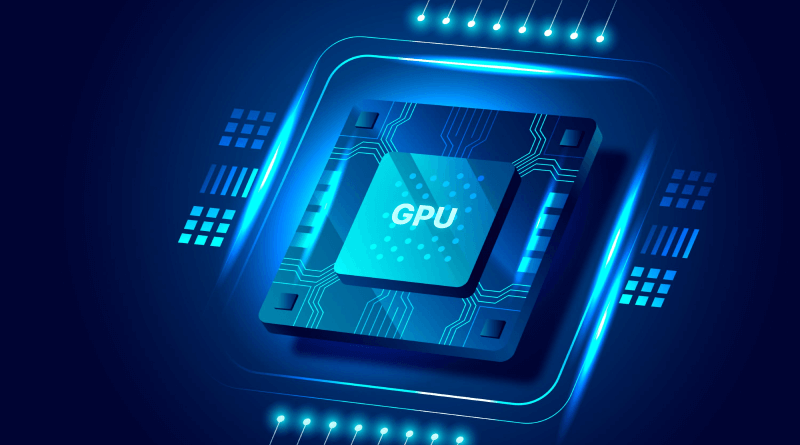
Cloud computing has transformed how businesses operate, providing access to scalable resources without the need for substantial upfront investments. However, as computational workloads grow increasingly complex—especially in artificial intelligence (AI), machine learning (ML), and data analytics—the demand for more efficient processing has surged. This is where GPU computing shines, offering a paradigm shift in how cloud services handle intensive workloads.
The Power of GPUs in Modern Computing
Graphics Processing Units (GPUs), initially designed for rendering graphics in gaming and visual applications, have evolved into versatile processors capable of accelerating a wide range of computational tasks. Unlike CPUs, which excel at serial processing, GPUs are designed for parallelism, making them highly efficient for workloads that involve repetitive mathematical operations.
In cloud environments, GPUs enable organizations to process vast amounts of data, train complex ML models, and execute real-time analytics with exceptional speed and precision. This capability has made GPU computing indispensable in domains such as AI, video rendering, scientific simulations, and large-scale data processing.
Performance Gains with GPU Computing
1. Accelerated Processing Speeds
One of the most significant advantages of GPUs is their ability to handle data-intensive tasks at speeds far surpassing traditional CPUs. In AI and ML workloads, for instance, GPUs can train models in hours instead of days. This reduction in time-to-result is crucial for businesses operating in competitive industries where rapid innovation is a key differentiator.
2. Parallel Computing at Scale
GPUs are designed to perform thousands of computations simultaneously, making them ideal for parallel processing. In cloud services, this translates into the ability to scale workloads across multiple GPUs to process data in real time. Applications such as image recognition, natural language processing (NLP), and financial modeling benefit immensely from this parallelism.
3. Enhanced Precision for Scientific Workloads
For research and development in areas such as genomics, climate modeling, and astrophysics, precision is paramount. GPUs offer high-performance computing capabilities that provide the accuracy required for these complex simulations, ensuring reliable results in shorter time frames.
Cost Efficiency in GPU-Enabled Cloud Services
1. Pay-As-You-Go Flexibility
Cloud services equipped with GPU computing allow businesses to pay only for the resources they use. This model eliminates the need for significant capital investments in hardware, offering a cost-effective solution for startups and enterprises alike. By leveraging GPUs in the cloud, organizations can access cutting-edge hardware without the overhead of maintenance and upgrades.
2. Reduced Operational Costs
Because GPUs can process workloads faster than CPUs, they often require less time to complete tasks. This efficiency reduces operational costs, particularly for businesses running workloads with high computational demands. For instance, training an AI model that takes a week on CPU-powered infrastructure can be reduced to a day with GPUs, translating into significant cost savings.
3. Improved Energy Efficiency
GPUs are designed to handle specific workloads more efficiently than CPUs, often consuming less power per computation. In large-scale deployments, this energy efficiency can lead to substantial cost reductions in terms of electricity and cooling requirements, contributing to overall operational savings.
Versatility Across Industries
The applications of GPU computing in cloud services extend across various industries, driving innovation and unlocking new opportunities.
1. Artificial Intelligence and Machine Learning
AI and ML are among the most prominent beneficiaries of GPU computing. Tasks such as deep learning model training, image classification, and NLP require immense processing power. GPUs provide the parallelism and speed necessary to handle these tasks efficiently, enabling faster experimentation and deployment cycles.
2. Media and Entertainment
Rendering high-quality visual effects and animations demands considerable computational resources. GPUs accelerate these processes, reducing the time required to produce complex visuals. Cloud-based GPU computing also supports real-time video streaming, gaming, and virtual reality experiences.
3. Healthcare and Life Sciences
In healthcare, GPUs, powered by cloud computing services, facilitate advancements in medical imaging, drug discovery, and genomics. For example, GPUs enable faster processing of MRI scans and genetic data, aiding in quicker diagnoses and personalized treatments.
The Future of GPU Computing in the Cloud
As the demand for high-performance computing grows, the role of GPU computing in cloud services will continue to expand. Emerging technologies such as generative AI, autonomous systems, and real-time analytics will push the boundaries of what GPUs can achieve.
Moreover, advancements in GPU architecture and cloud infrastructure are making these capabilities increasingly accessible. The combination of GPU computing with innovations like serverless architecture and edge computing will open up new possibilities for businesses seeking to harness the full potential of their data.
Conclusion
GPU computing in cloud services represents a powerful synergy of performance and cost efficiency. By enabling faster processing, scalability, and energy savings, GPUs are revolutionizing how businesses tackle computational challenges. Whether it’s accelerating AI development, powering financial models, or driving scientific discovery, GPUs are a cornerstone of modern cloud computing infrastructure.

